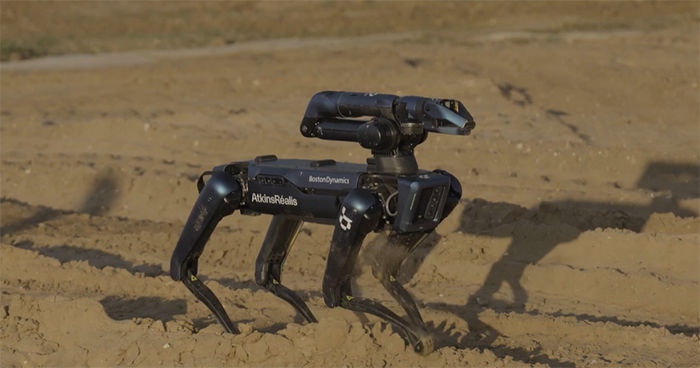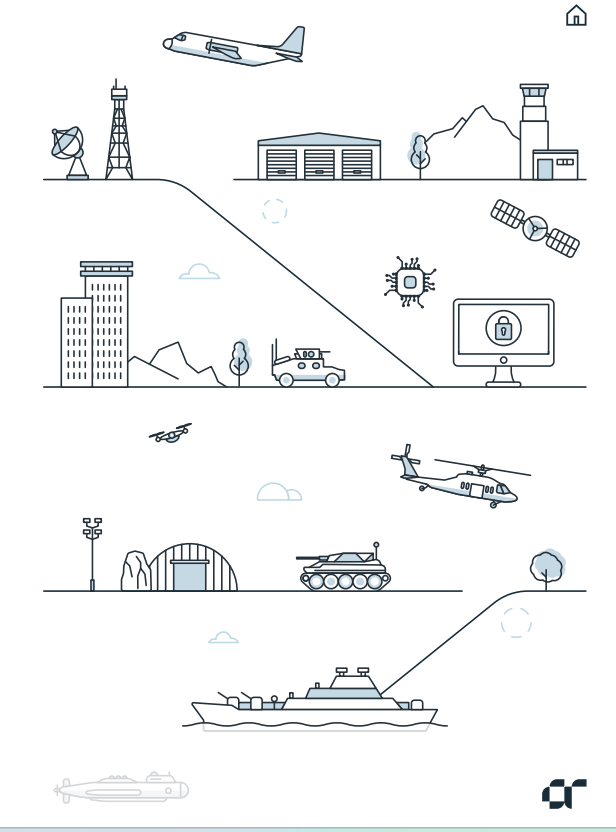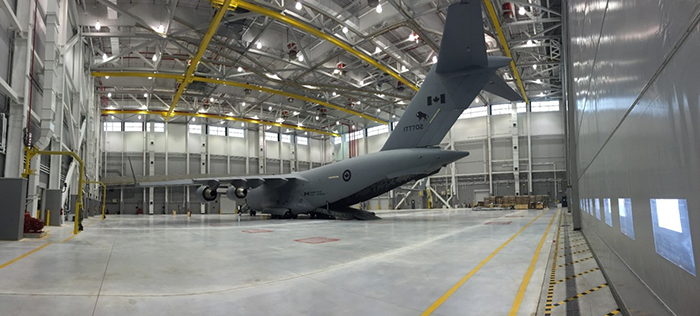Canada’s defence sector is transforming fast. With record government investment, shifting global dynamics, and renewed focus on national security, the country is rebuilding not only its military capability but also the design, engineering, construction, and manufacturing foundation that supports it.
At the center of that effort is AtkinsRéalis, a globally operating engineering services and nuclear company of 40,000 people with both deep Canadian roots, and experience in some of the world’s largest defence programs. Leading AtkinsRéalis’ charge is Antonella Tomaro, Vice President, Defence, Canada, whose work is helping define how infrastructure, innovation, and Canadian pride intersect in this new, sovereign, and nation-building era of defence.
In this conversation, she shares her journey from structural engineer to national defence strategist, offering a rare look at how Canada, home to some of the world’s largest engineering firms, is renewing its ability to ensure the security of its citizens, and why the next decade could redefine what it means to protect the country.

Q: Canada’s defence priorities are shifting quickly. How do you describe this moment?
Up till not long ago, no one spent much time thinking about how our country would defend us if there was a conflict. Today, we are witnessing a huge shift. Everyone is talking defence. Canada is actively rebuilding, rearming, and reinvesting in the Canadian Armed Forces (CAF). The government’s “Our North, Strong and Free” policy reflects this renewed focus on national sovereignty and security.
With spending going from 2 per cent of GDP in 2025 to 5 per cent by 2035, there will be a lot of commitments, procurement, and change. We have been modest compared to our allies, but we are undergoing a major transformation with substantial investments in modernizing infrastructure and taking care of our personnel.
Q: When you talk about “defence engineering,” what kind of work does that actually mean?
That’s an amazing question because I think a lot of people hear “defence” and immediately think weapons, ammunition, aircraft — the F-35s for example, which are still a big topic today. But defence is also about everything that supports those assets.
You can have all of this great equipment, but equally critical, and probably just as critical, is the infrastructure that allows these assets to operate, to have long-term capability, and to be out there and ready whenever we need them.
At AtkinsRéalis, we’re involved in that full lifecycle from the technical design and project management to systems integration, and even asset operation and maintenance. It’s end-to-end work, across land, sea, and air. We design the military facilities that make all of this possible: the hangars, the maintenance depots, the infrastructure on the east and west coasts, and the specialized operational infrastructure, including cybersecurity systems. There are so many elements required to make defence work and to achieve the outcomes we all want and that’s to be mission-ready.
What people sometimes don’t realize is that all this infrastructure must be ready well before the equipment itself.

Q: That’s a really helpful definition of what “defence work” means in practice. From your vantage point, where is Canada in that process?
Things are already happening. Right now, there are many public requests for proposals for the infrastructure that needs to be ready before the aircraft or vessels even arrive.
For example, the National Shipbuilding Strategy has been underway since 2010. Canada is building ships on both coasts, but the infrastructure supporting those vessels — the ports, the maintenance depots, the technical facilities — all have to be in place first. It needs to be ahead of the game.
As I mentioned, Canada has committed to increasing its defense spending to 5 per cent of GDP by 2035. Included in that is 1.5 per cent of GDP earmarked to go specifically toward infrastructure, things like bases, ports, railways, and airfields. Without this infrastructure, the aircraft can’t fly, the ships can’t dock, supplies can’t be transported, and the forces can’t operate. The supporting structures must come first — because without that foundation, nothing else functions. Ultimately, this is a long-term national effort that will unfold over the coming decades.
Q: How much of this can Canada realistically build at home, and where do partnerships fit in?
We still need to source imports for some things; for both technological and political reasons. But if we can do most of it in Canada by Canadians, that is a win.
Industrial Technological Benefits are important. When large equipment comes from outside, an equivalent dollar value must flow into Canadian suppliers. That creates opportunity across the country; especially with traditional manufacturing industries under strain right now.
That includes working closely with Indigenous partners. Across Canada, and especially in the North, everyone’s involvement is essential. AtkinsRéalis has been teaming with Indigenous companies on many of these projects, ensuring the benefits and opportunities of this work are shared, and that Indigenous communities have a voice in how these projects take shape. It’s part of what makes this moment feel so different, the sense that we’re building Canada’s defence future together.

Q: Beyond policy and infrastructure, is there a cultural shift happening around defence in Canada?
Absolutely. I think every Canadian wants to be part of it. Many engineers are interested in working on these projects. When I was offered this job, it felt like my way of helping our country. There’s a real sense of pride in that.
That pride isn’t just within AtkinsRéalis: it’s something we’re seeing nationwide. For a long time, defence wasn’t a word most Canadians connected with optimism or innovation. Now it’s becoming a point of nation-building unity, as Canada seeks to reinvigorate domestic industry. People see that this work isn’t about war, it’s about capability. It’s about building the infrastructure that protects what we value and doing it in a way that reflects who we are as a country.
Q: Looking ahead , what does this mean for AtkinsRéalis and for Canada?
It’s huge for both. At AtkinsRéalis, we often say there’s nothing in engineering we can’t do. Within Canada for AtkinsRéalis, Defence is one of the biggest areas of growth for the next decade. We already operate across every aspect of Canada’s infrastructure and energy systems, from hydropower and nuclear, to mining, to transportation and water. And we’re already involved in projects for the CAF, so defence is really a natural evolution for us. Especially considering our robust portfolio of defence work around the world and for allies of Canada: such as the AUKUS submarine program for Australia, as well as multiple mandates for the UK’s Ministry of Defence.
We’re hiring, investing, and building capacity to meet that demand. And beyond the business side, it’s deeply personal. We’re a company that was founded in Canada all the way back in 1911. We helped build this country, initially through hydropower and then other types of infrastructure. And now, we’re helping to protect it for the next many generations
About Antonella Tomaro Vice President, Defence, Canada, AtkinsRéalis
Antonella Tomaro is Vice President, Defence, Canada at AtkinsRéalis, where she leads national defence initiatives across the country. An engineer by training, she holds a degree in civil engineering and a master’s in structural engineering.
Antonella spent more than 15 years on the technical design side, before moving into project management, gaining experience in project controls, planning, and estimating. Her career took her abroad as a project coordinator on a $5-billion aluminum project in the UAE an experience she describes as transformative for how she learned to lead large, complex projects and engage diverse stakeholders.
After returning to Canada, Antonella rejoined AtkinsRéalis in 2021 to focus on business development for the federal market. Today, she draws on her background in engineering, project management, and federal strategy to help shape Canada’s defence infrastructure for the future.
This interview has been edited for length and clarity.


